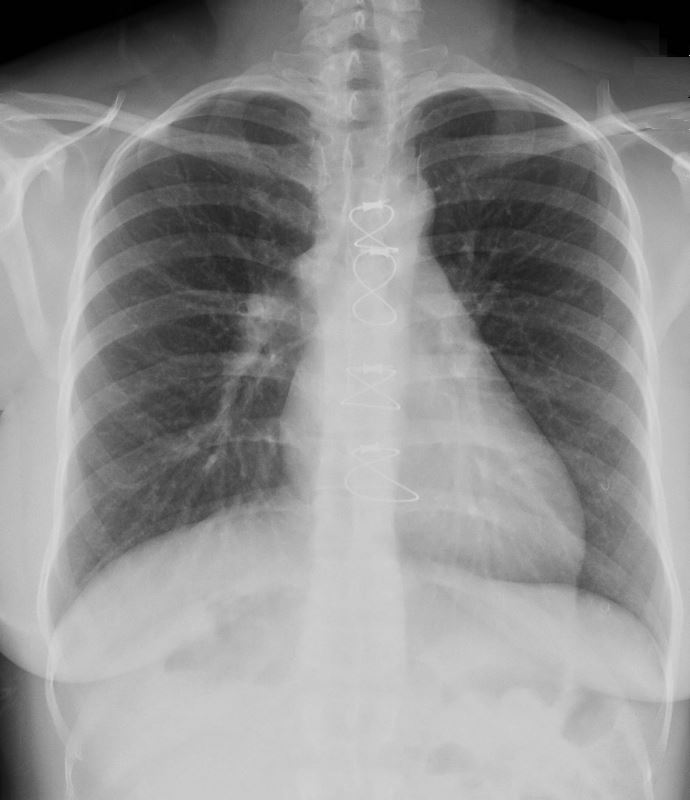
44 year old female with history of polysplenia syndrome,s/p ASD secundum repair, s/p left mastectomy for breast carcinoma, and with new neuroendocrine lung tumor.
Frontal X-ray shows a bilobed soft tissue abnormality above the right main stem bronchus The region of the main and left pulmonary artery is also prominent.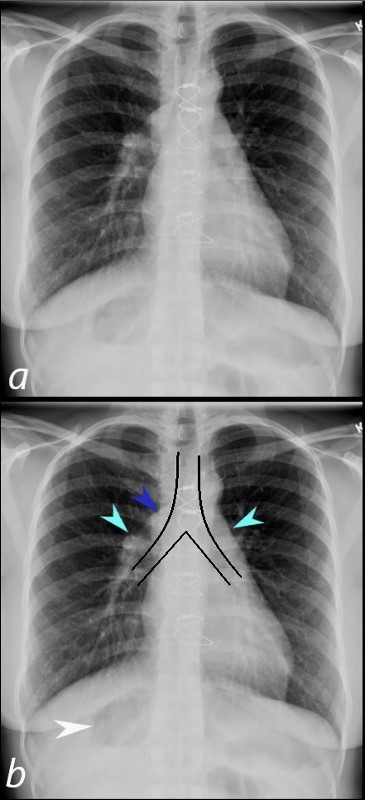
44 year old female with history of polysplenia syndrome,s/p ASD secundum repair, s/p left mastectomy for breast carcinoma, and with new neuroendocrine lung tumor.
CXR shows a soft tissue density above the right mainstem bronchus (dark blue arrowhead , b) a high lying RPA (light blue arrowhead b) and a prominent region of the MPA and left main pulmonary artery (light blue arrowhead left side ,b). Although the left and right main bronchi are suboptimally visualised they appear as symmetric structures (black overlay, b)
The dark blue arrowhead point to the enlarged azygos vein, and the symmetric light blue arrowheads point t the bilateral hyparterial bronchi, indicating bilateral left sided lungs.
Ashley Davidoff MD
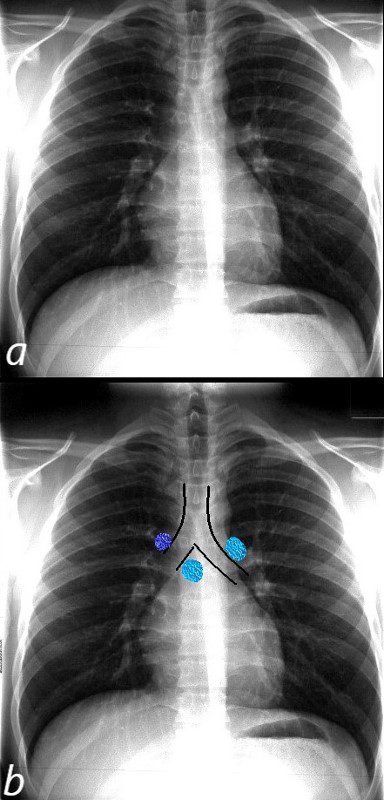
The normal CXR shows the superior position and relationship of the LPA to the left mainstem bronchus. The bronchus is hyparterial ie below the artery.
The RPA (light blue and right in b) runs below the right mainstem bronchus ie the bronchus is eparterial . The azygos vein lies superior to the right mainstem bronchus at the take off of the right mainstem from the trachea.
Ashley Davidoff MD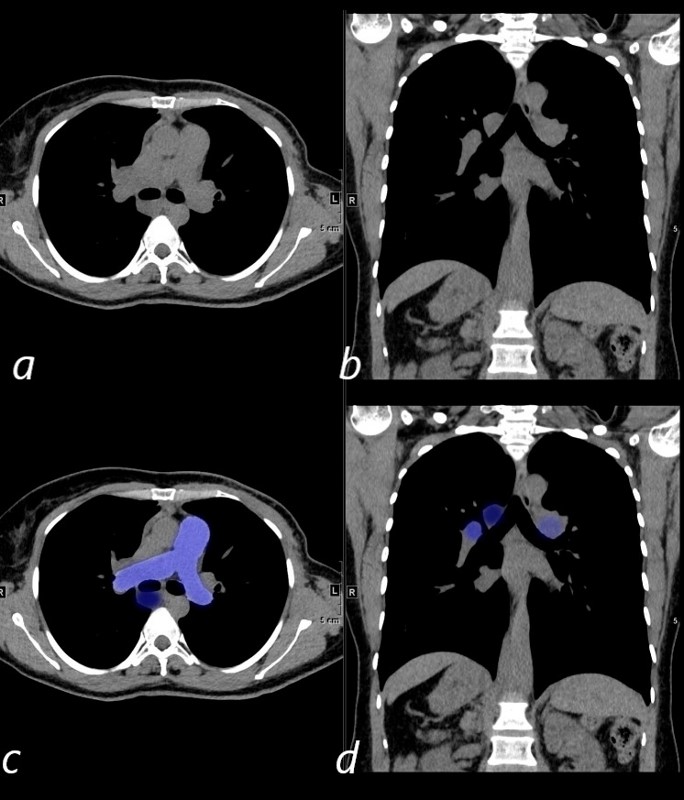
44 year old female with history of polysplenia syndrome,s/p ASD secundum repair, s/p left mastectomy for breast carcinoma, and with new neuroendocrine lung tumor.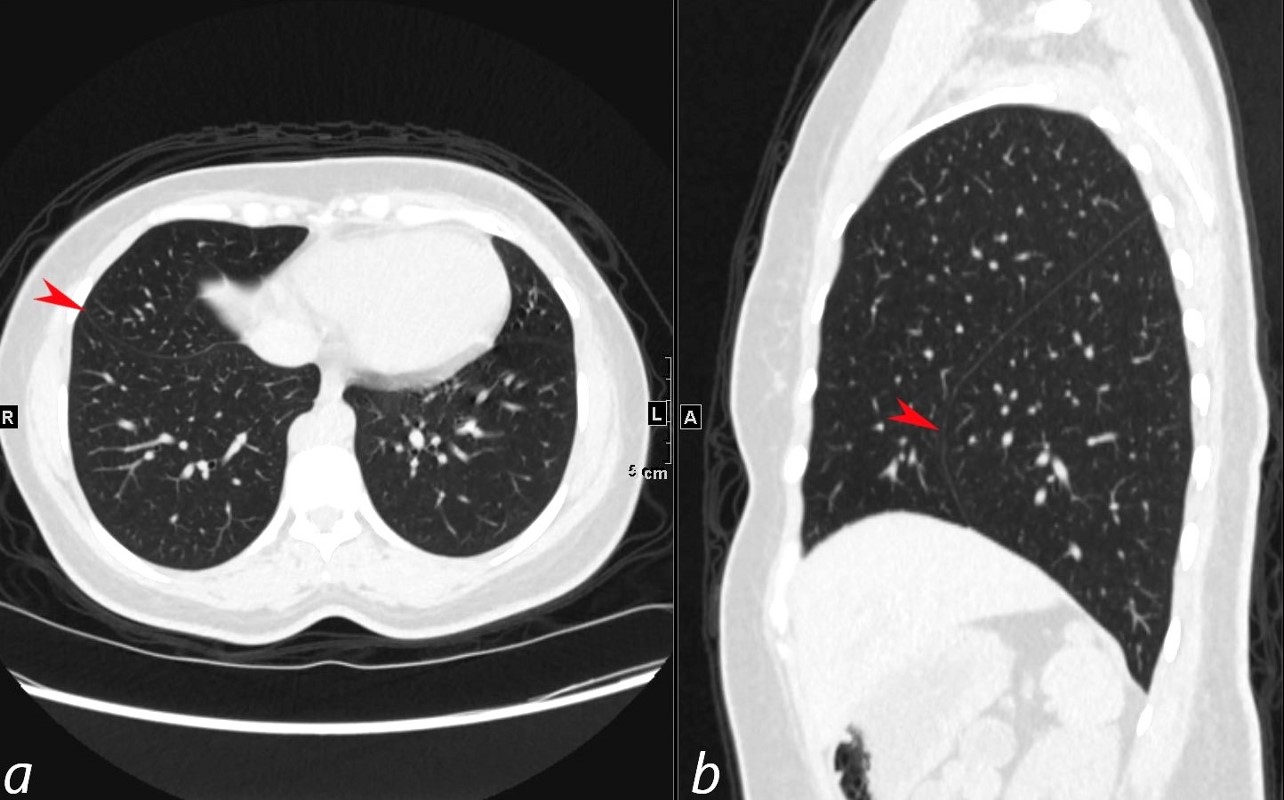
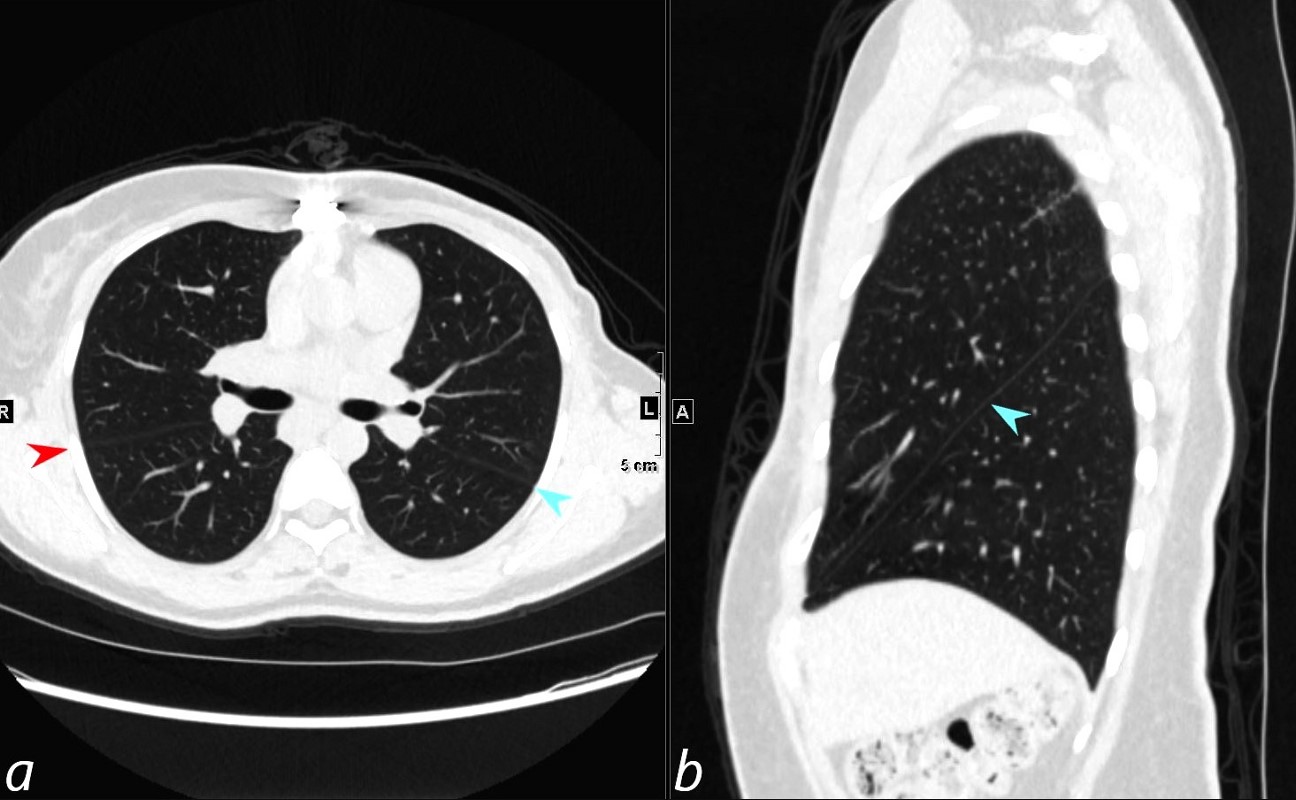
44 year old female with history of polysplenia syndrome,s/p ASD secundum repair, s/p left mastectomy for breast carcinoma, and with new neuroendocrine lung tumor.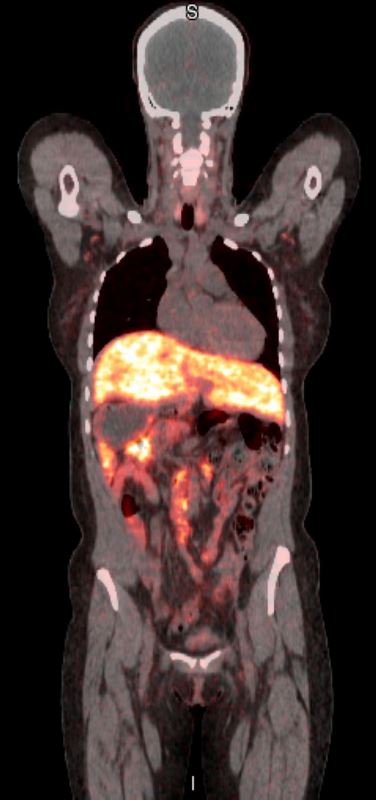
44 year old female with history of polysplenia syndrome,s/p ASD secundum repair, s/p left mastectomy for breast carcinoma, and with new neuroendocrine lung tumor.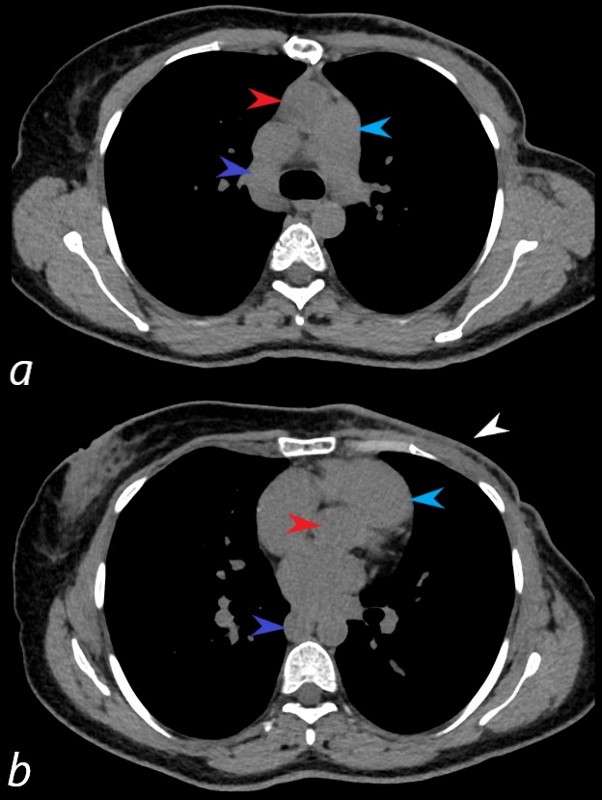
AZYGOUS EXTENSION – POLYSPLENIA SYNDROME
44-year-old female with history of polysplenia syndrome, s/p ASD secundum repair, s/p left mastectomy for breast carcinoma, and with new neuroendocrine lung tumor.
Axial images through the heart and great vessels, show an enlarged azygous vein (dark blue arrowheads a,b) a normal appearing aorta (red arrowheads, a,b) and the MPA (light blue arrowhead a), and RVOT (light blue arrowhead,)
Ashley Davidoff MD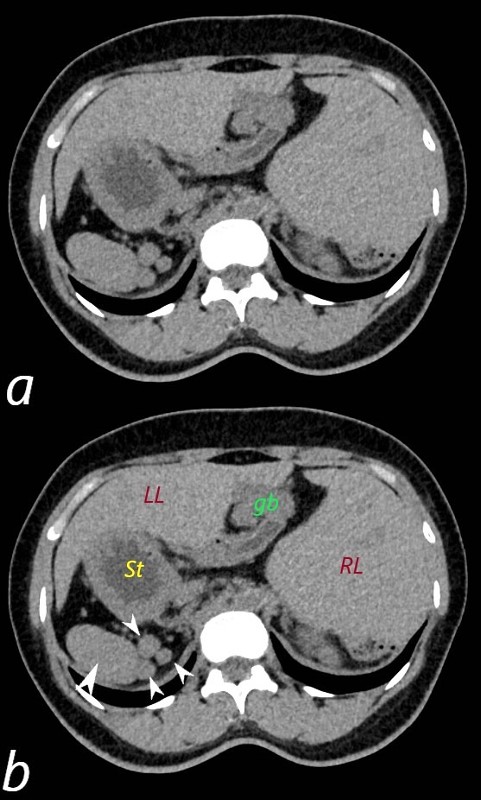
44 year old female with history of polysplenia syndrome,s/p ASD secundum repair, s/p left mastectomy for breast carcinoma, and with new neuroendocrine lung tumor.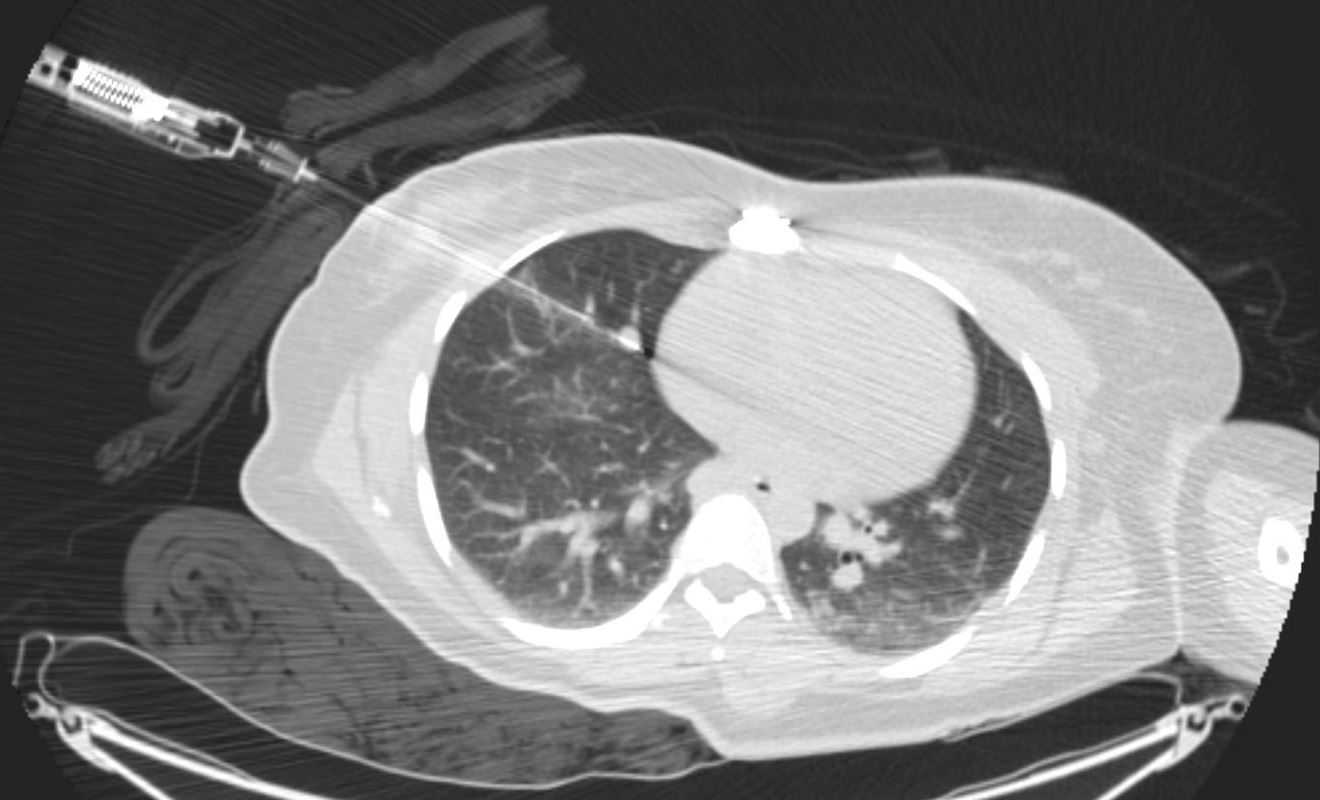
44 year old female with history of polysplenia syndrome,s/p ASD secundum repair, s/p left mastectomy for breast carcinoma, and with new neuroendocrine lung tumor.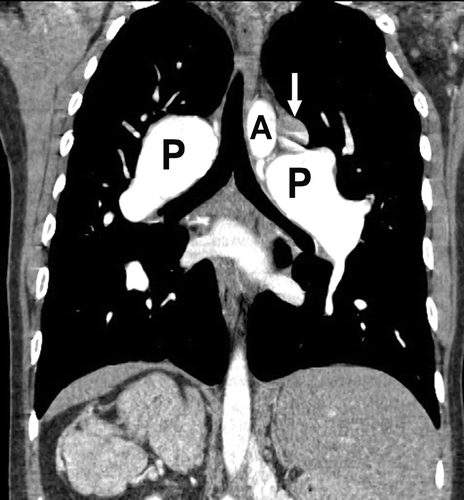
Read More: https://www.ajronline.org/doi/10.2214/AJR.06.1179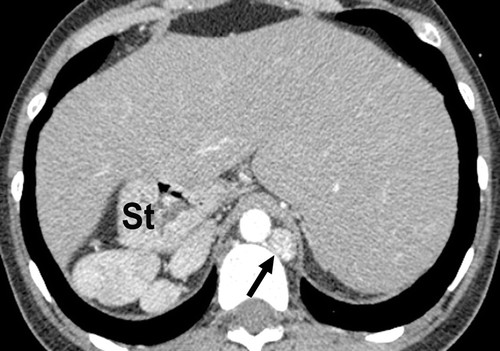
Read More: https://www.ajronline.org/doi/10.2214/AJR.06.1179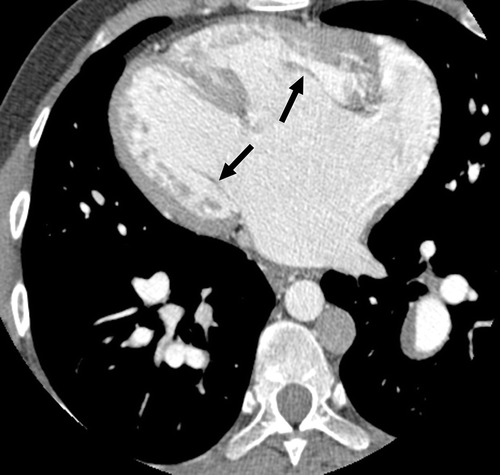
Read More: https://www.ajronline.org/doi/10.2214/AJR.06.1179
